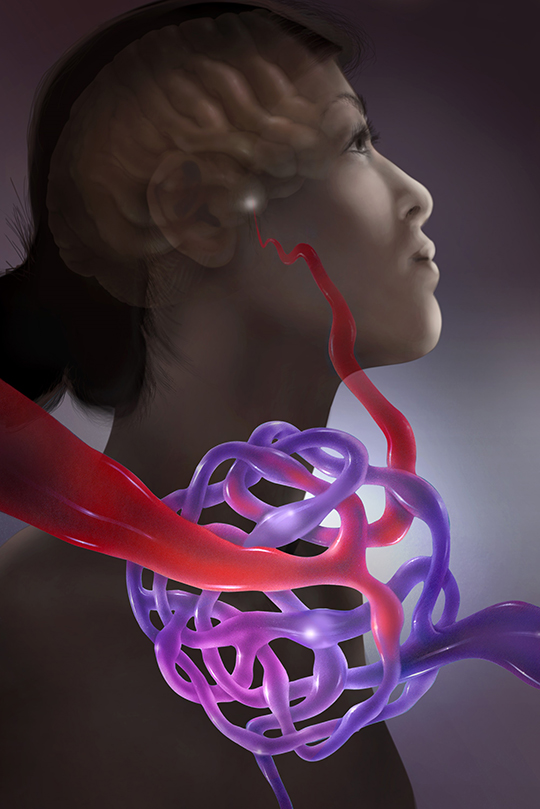On this page:
- • What is arteriovenous malformation?
- • What are the causes of arteriovenous malformation?
- • What are the symptoms of arteriovenous malformation?
- • How is arteriovenous malformation diagnosed?
- • Is surgery necessary for arteriovenous malformation?
- • What are non-surgical treatment options for arteriovenous malformation?
We have 3 convenient locations throughout Southeastern Wisconsin.
What are symptoms of arteriovenous malformation?
The most common symptom of an AVM is headaches. Other symptoms include hemorrhaging (bleeding), seizures and neurological problems such as paralysis, muscle weakness or loss of speech, vision, coordination or memory.
Only about 12% of people with AVMs have symptoms; most people with AVMs do not require treatment. Symptoms are most often noticed in a person’s twenties, thirties or forties.
How is arteriovenous malformation diagnosed?
AVMs can be diagnosed with an angiogram in which a thin, flexible tube is inserted into an artery and guided to the AVM. A contrast dye is then introduced, revealing the AVM on x-ray. Sometimes computed tomography (CT or CAT scan) or magnetic resonance imaging (MRI) is used for diagnosis.
Dr. Ahuja and staff perform imaging procedures at The Brain and Spine Imaging Center, our state-of-the-art imaging facility in Franklin, Wisconsin.
Is surgery necessary for arteriovenous malformation?
The type of treatment recommended depends on the size and location of the AVM, surrounding critical structures, and the patient’s general health and well-being.
Conventional surgery involves entering the brain or spinal cord and removing the central part of the AVM. Minimally invasive state-of-the-art techniques are also available, particularly for AVMs deep inside the brain.
What are non-surgical treatment options for arteriovenous malformation?
Many non-ruptured, asymptomatic AVMs can be observed and followed.
Embolization through a neuroendovascular treatment involves closing off the AVM blood vessels by injecting glue into them (a process referred to as endovascular gluing) or placing coils or tiny balloons there.
Stereotactic radiosurgery is a scalpel-free procedure that focuses radiation on the AVM. Over a period of months, the blood vessels of the AVM then degenerate and eventually close.



